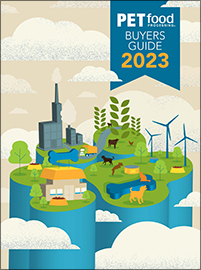LONDON — The US Department of Agriculture (USDA) Foreign Agricultural Service (FAS) advised US exporters on Nov. 28 on the new post-Brexit Border Target Operating Model (BTOM) to be employed by the United Kingdom for import controls. Imports from the European Union will be subject to the new import controls starting Jan. 31, 2024, and imports from the rest of the world will be subject to the new controls starting April 30.
The Border Target Operating Model details security controls for a number of imported products, as well as sanitary and phytosanitary controls for imported animal products, live animals, plants and plant products. According to the British government, the model was developed in collaboration with the Scottish and Welsh governments, as well as officials from Northern Ireland.
As of April 30, pet food and products for the manufacture of pet food have been identified as medium-risk categories through the BTOM. Canned pet food, otherwise processed pet foods, and dog chews will be subject to existing import processes in accordance with the Northern Ireland Retail Movement Scheme.
Pet food and products for the manufacture of pet food fall under the animal by-products (ABPs) category of imports into the United Kingdom. This category also includes animal proteins, blood and blood products, rendered fats and fat derivatives, gelatin and collagen, hides and skins, horns and trophies, milk products, phosphate products, wool, hair and feathers, and other ABPs such as fish oil and egg products used in animal feed.
According to the British government, certain medium-risk ABP products will be treated as low-risk “once a new channeling procedure, specifically for low-risk goods, from non-EU trading partners has been developed.”
Learn more about the BTOM and associated risk categories.
Read more global pet food and treat news from outside North America.




